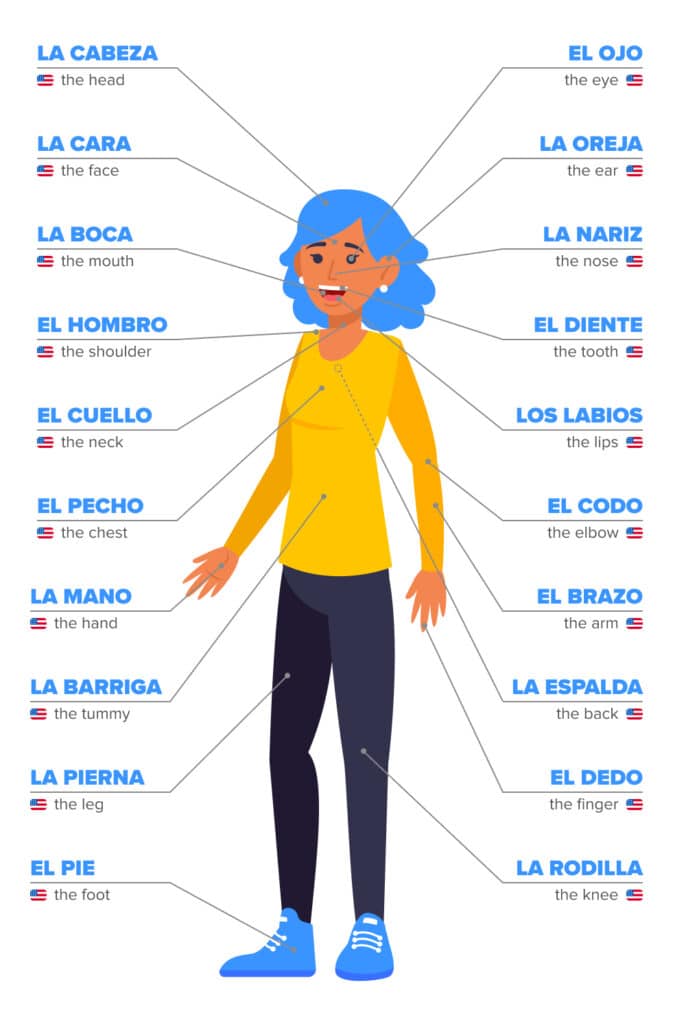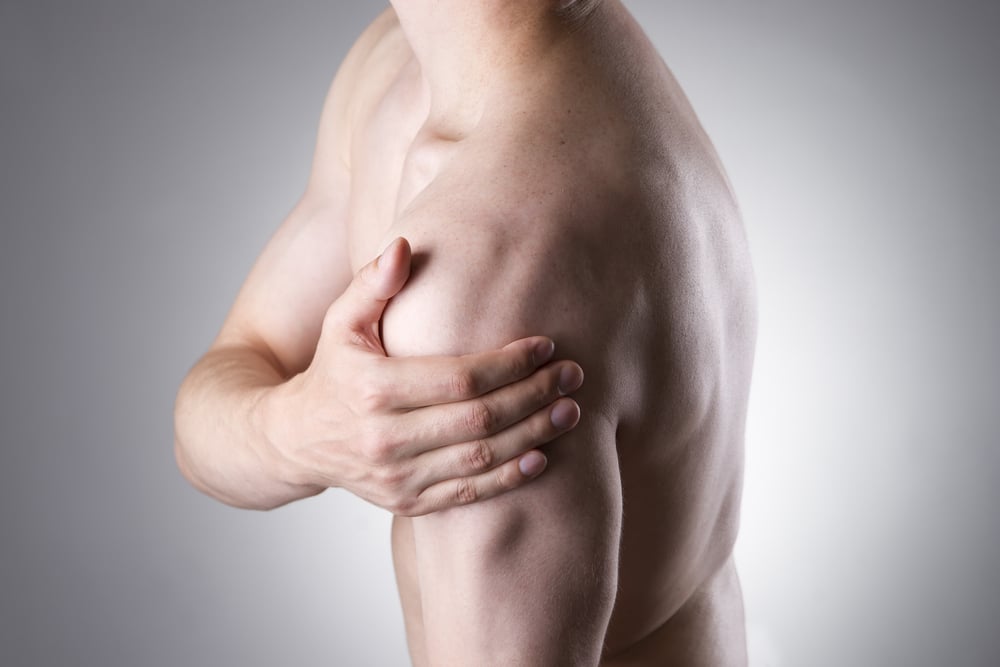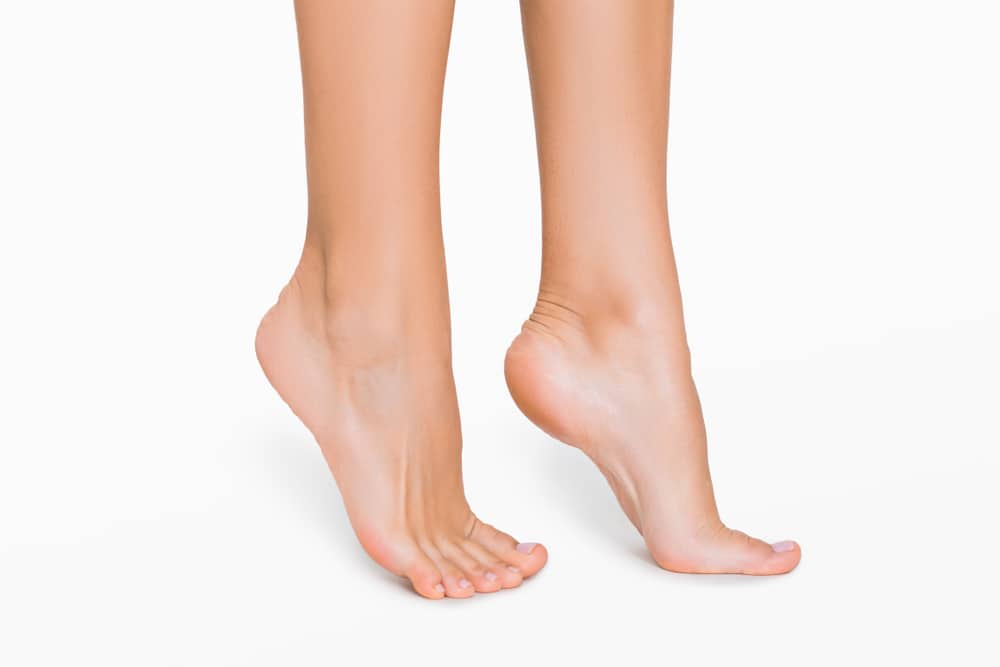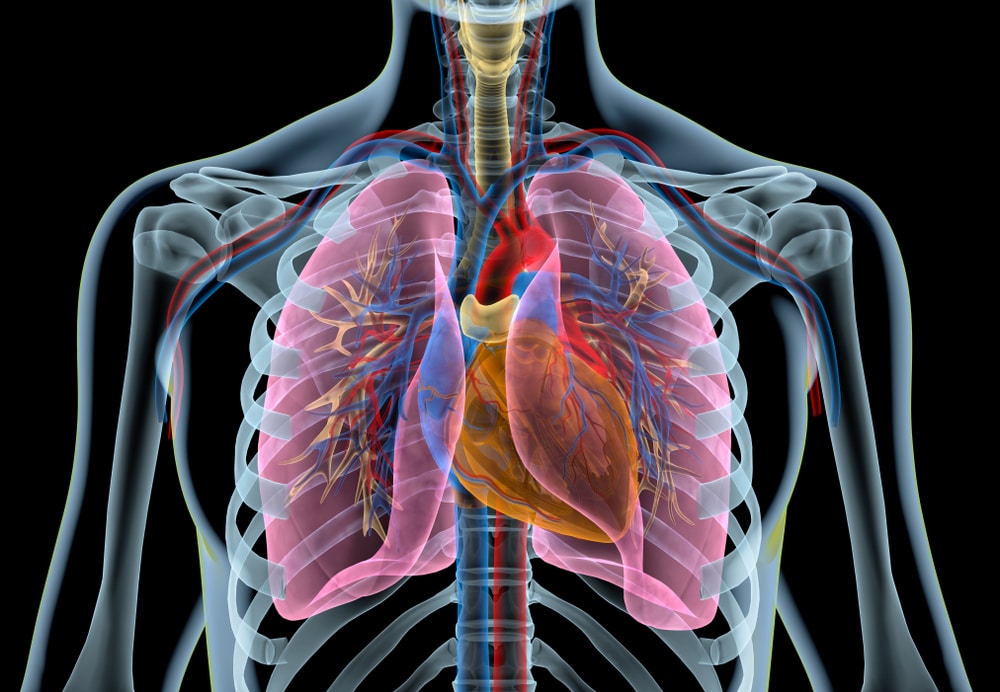
Knowing how to say the body parts in Spanish is more valuable than you can imagine.
I’ve lived abroad long enough to know that these everyday words are beneficial at the gym, when you need to visit the doctor and more.
In this blog post, I share a complete Spanish body parts vocabulary list with 72 key words, and some simple grammar rules for speaking about your body in Spanish.
Contents

Download:
This blog post is available as a convenient and portable PDF that you
can take anywhere.
Click here to get a copy. (Download)
Spanish Body Part Vocabulary
From the Neck Up in Spanish

Let’s get a headstart with the body parts from the neck up that you need to know in Spanish.
You’ll notice that for all body parts listed in this blog post, there’s a definite article (el / la or las / los) in front of each. When talking about your body, you should always use the definite article.
From the Shoulders to the Navel in Spanish

So far so good? Great! Now we’re going to the (literal) core—the shoulders to the navel.
Though most of the words listed above and below are singular, you can follow the rules for plurals in Spanish to talk about pairs (i.e. los ojos, las muñecas, etc).
From the Hips to the Toes in Spanish

Whenever I visit a Spanish-speaking country, it’s fun to hear people use different words than I’m used to for some body parts.
For instance, el trasero—the butt—can be called las pompis or las nalgas depending on the country.
This is important to keep in mind as you continue working through these lists. These are the standard words, but different dialects can have their own specific terms that are more common in that country.
For this reason, I like to use an immersion program like FluentU. It allows you to watch authentic Spanish videos (like music videos, news reports and inspiring talks) from Spanish-speaking countries all around the world.
Each video also comes with interactive subtitles, which you can hover your cursor over to see detailed information about each term, from definitions to pronunciation. By seeing how native speakers talk about body parts—and a ton of other things—in different contexts, you’ll pick up more natural-sounding Spanish.
Beneath the Skin in Spanish

Talking About Grooming in Spanish
Check out these useful verbs in Spanish when dealing with grooming and your appearance.
Expressions with Body Parts in Spanish
Did you know that parts of the body are also used in other contexts in Spanish?
Learn these phrases that use words in the list above:
Grammar for Speaking About the Body in Spanish
You’re ready to start talking about the body in Spanish with this comprehensive list.
Learning the vocabulary is half the battle, though.
Let’s look at some essential grammar points you’ll need to understand when talking about your body en español.
Adjective Agreement
Remember that when adding an adjective to describe the nouns on this list, you should match the number and gender of the adjective to the noun it’s describing.
Reflexive Verbs
Reflexive verbs express an action that’s done to the subject, usually by the subject.
For example, if you’re going to wash your hair, you wouldn’t say voy a lavar mi pelo, though I’d still understand you.
Instead, you’d use the reflexive verb lavarse (rather than lavar).
Reflexive verbs in the infinitive are written with the suffix –se, so in this example, lavar becomes lavarse:
Voy a lavarme el pelo. (I’m going to wash my hair.)
The reflexive verb stays even if someone does the action instead of you. For example:
Me lavé el pelo en el salón. (I got my hair washed at the salon.)
Learn more about reflexive verbs here.
Describing Body Aches and Pains
We use doler or tener dolor + de to express pain and aches.
Me duele la cabeza / Tengo dolor de cabeza (I have a headache).
Le duele la espalda / Tiene dolor de espalda (He / She has back pain).
Alternatively, you might hear some people say me molesta or tengo molestia / siento molestia to express discomfort:
Me molesta el brazo derecho / Siento molestia en el brazo derecho (I have pain in my right arm / my right arm bothers me).
Make sure you practice these phrases a few times.
Last year while in Egypt, I had to visit the doctor for some stomach pain. My 300 Egyptian pounds for the consultation took me as far as the little Arabic I knew (hint: it wasn’t very far).
If you ever need to visit the doctor or a pharmacy in a Spanish-speaking country, I don’t want you to get stuck like I did in Egypt.
There you have it! A comprehensive list of body parts in Spanish that won’t leave you hanging at the peluquería (hairdressers) or confused as you follow along in bachata class.



